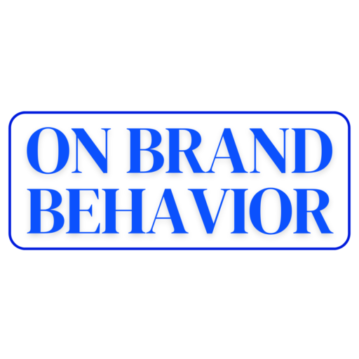Most buying decisions aren’t rational—they’re subconscious. People make split-second choices based on psychological triggers rather than logical evaluation.
Ethical influence isn’t about manipulation—it’s about understanding consumer behavior and structuring your brand messaging in a way that helps customers feel confident in their decisions.
If you’re not using behavioral triggers in your marketing, you’re relying on hope instead of strategy. This guide breaks down how to ethically guide customers toward action without using misleading tactics.
Why People Buy: The Science of Decision-Making
People don’t make decisions based on facts alone. They rely on:
• Emotions (How does this product make me feel?)
• Cognitive shortcuts (Is this brand trustworthy?)
• Social validation (Are other people buying this?)
These factors happen automatically—if your brand aligns with these natural decision-making processes, you remove friction and make it easier for customers to say yes.
The 5 Most Powerful Behavioral Triggers in Marketing
1. Anchoring: The First Number Shapes Perception
People make decisions based on the first number they see—even if it’s arbitrary. This is why premium pricing, comparison charts, and discounts are so effective.
Examples:
• A luxury watch brand sells a $20,000 model next to a $5,000 model. The second option feels like a great deal, even though it’s still expensive.
• A website offers a $200/month plan first, making a $49/month option seem cheap.
• Retail stores use “Was $199, Now $99” to frame the lower price as a bargain.
How to Apply This:
• Always introduce your premium offer first so lower options feel more affordable.
• Use price anchoring in discounts, upsells, and pricing tiers.
• Show side-by-side comparisons to make your preferred offer stand out.
The first price customers see sets their entire perception of value.
2. Framing Effect: How You Present an Offer Changes Its Appeal
The way you present an offer changes how attractive it seems. The facts don’t change—but the perception does.
Examples:
• Instead of saying “90% lean beef,” brands avoid negative framing like “10% fat.”
• Subscription services say “Only $1 per day” instead of “$30 per month” to make the price feel smaller.
• A dentist says “Protect your teeth for life” instead of “Avoid cavities.”
How to Apply This:
• Focus on benefits, not just features.
• Reframe pricing in smaller, digestible numbers.
• Avoid negative wording that creates hesitation.
Customers don’t buy products—they buy perceived value.
3. The Endowment Effect: People Value What Feels Like Theirs
Once people feel ownership over something, they value it more.
Examples:
• Free trials make customers feel like they already own the product, making cancellation harder.
• Car dealerships encourage test drives because people feel attached once they experience the car.
• Customization options (Nike ID, monogrammed bags, personalized software settings) create a sense of personal investment.
How to Apply This:
• Offer free trials, demos, or samples to create an ownership feeling.
• Let customers customize their experience (colors, names, preferences).
• Use interactive quizzes or product selectors that make users feel involved.
The more personal an experience feels, the more valuable it becomes.
4. Loss Aversion: People Hate Losing More Than They Love Gaining
People are twice as motivated to avoid loss than to gain something new. This is why scarcity, limited-time offers, and exclusivity drive faster action.
Examples:
• Airlines use “Only 3 seats left at this price” to create urgency.
• E-commerce sites show “X people are viewing this now” to trigger FOMO.
• Membership programs highlight “Locked Features” to make free users feel they’re missing out.
How to Apply This:
• Frame offers as “Don’t Miss Out” instead of “Get This Now.”
• Use countdown timers, limited stock, and urgency-driven messaging.
• Show what customers lose by not taking action (bonuses, discounts, access).
Fear of missing out is stronger than the desire to gain.
5. Social Proof: People Trust What Others Trust
People are more likely to trust, buy, or follow brands that others already trust.
Examples:
• Amazon products with thousands of reviews sell better than unrated ones.
• Restaurants with long wait times appear more desirable than empty ones.
• Websites that display “10,000+ happy customers” increase conversions.
How to Apply This:
• Showcase testimonials, reviews, and success stories.
• Use real numbers: “500,000+ people have taken this course.”
• Feature logos of trusted brands that use your product or service.
Customers rely on other people’s actions to guide their own.
How to Ethically Apply These Behavioral Triggers in Your Business
These strategies aren’t about manipulation—they’re about structuring your offers in a way that makes decision-making easier, more confident, and natural.
1. Use anchoring to make pricing feel reasonable.
2. Frame your offer in the most compelling way.
3. Create ownership experiences that increase perceived value.
4. Leverage loss aversion to drive urgency and action.
5. Show social proof to build trust instantly.
When used ethically, these triggers don’t just drive conversions—they help customers feel more confident in their buying decisions.
What’s Next?
If you want to learn more about applying behavioral psychology to influence customer decisions and increase conversions, check out On Brand Behavior’s resources.
Which behavioral trigger do you see brands using the most? Let’s discuss.
